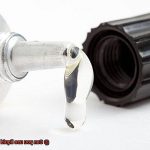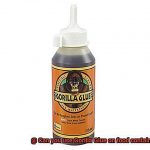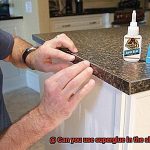When it comes to healing cuts and wounds, we typically rely on the tried-and-true methods of bandages and antiseptic ointments. However, there’s a new contender in town – superglue. Yes, you read that right. The stuff that holds together your broken coffee mug might just be the secret weapon for sealing up minor cuts.
Dubbed “liquid bandaging,” this unconventional approach has piqued interest for its convenience and potential time-saving benefits.
But before you grab that tube of superglue from your toolbox, let’s dive into the medical facts and practical considerations.
In this article, we’ll explore the pros and cons of using superglue on cuts, weighing its effectiveness against potential risks.
Can You Use Superglue on Cuts?
Contents
- 1 Can You Use Superglue on Cuts?
- 2 Pros and Cons of Using Superglue on Cuts
- 3 Cleaning the Wound Before Applying Superglue
- 4 How to Apply Superglue on a Cut
- 5 Alternatives to Using Superglue on Cuts
- 6 When to Seek Medical Attention for Cuts
- 7 Potential Risks of Using Superglue on Cuts
- 8 Safety Precautions When Using Superglue On Cuts
In the face of a nasty cut or wound, our instincts kick in to find a quick fix to stop the bleeding and seal the wound. One unconventional method that some people consider is using superglue. But before you grab that tube of adhesive, it’s crucial to understand why medical professionals advise against using superglue on cuts.
In this article, we will delve into the potential risks and limitations of using superglue as a treatment for cuts, and uncover why seeking professional medical help is always the superior choice.
Understanding the Risks:
Superglue, also known as cyanoacrylate adhesive, is a powerful bonding agent specifically designed for non-living materials. While it may seem tempting to use on cuts due to its lightning-fast nature, there are several compelling reasons why medical professionals caution against its use.
Not Designed for Medical Use:
Superglue is not formulated or tested for use on the human body. Its harsh chemicals can cause skin irritation and allergic reactions, making it unsuitable for application on open wounds or sensitive skin.
Interferes with Wound Healing:
Proper wound healing requires meticulous cleaning, disinfection, and protection from infection. Applying superglue directly onto a cut can hinder this process by trapping bacteria or debris inside the wound. On the other hand, medical-grade adhesives exist specifically for wound closure, providing a safe and flexible seal while allowing the wound to heal naturally.
Potential Complications:
Using superglue on larger or deeper cuts may fail to effectively seal the wound or prevent infection. Seeking professional medical help ensures that the wound receives proper cleaning, disinfection, and closure techniques to minimize complications.
Alternative Methods for Wound Closure:
While superglue may not be suitable for treating cuts, there are alternative methods that can be employed until proper medical care can be obtained:
Clean and Cover:
Thoroughly clean the wound with mild soap and water, gently remove any debris, and pat it dry. Cover the cut with a sterile gauze pad or bandage to protect it from further contamination.
Direct Pressure:
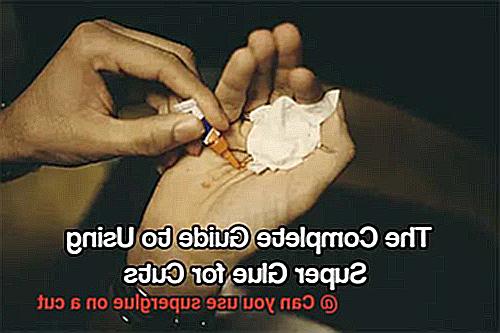
For bleeding cuts, apply direct pressure using a clean cloth or your hand to control the bleeding until medical help arrives.
Seek Medical Attention:

If you have a cut that requires medical attention, it is always best to seek professional help. Healthcare providers possess the necessary expertise and tools to properly clean, disinfect, and close wounds using appropriate methods.
Pros and Cons of Using Superglue on Cuts
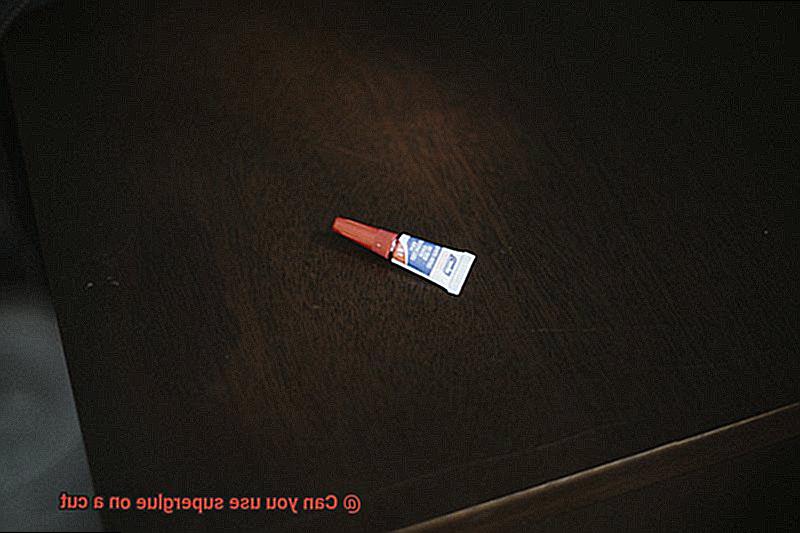
You’re weighing your options, and the idea of using superglue has crossed your mind. After all, it’s quick, easy, and seems like a convenient solution. But before you grab that tube of adhesive, let’s take a closer look at the pros and cons of using superglue on cuts.
Pros:
- Speedy Sealing: One of the major advantages of superglue is its ability to quickly seal wounds. It forms a strong bond when in contact with moisture, effectively holding the edges of a cut together and preventing further bleeding.
- Waterproof Wonder: Superglue is waterproof, making it ideal for cuts in areas prone to moisture or friction. So if you’ve got a nick on your finger or toe, using superglue can help keep it protected while you go about your day.
- Time and Money Saver: For minor cuts that don’t require stitches or medical attention, using superglue can save you a trip to the doctor’s office or emergency room. This means less waiting time, fewer expenses, and more time for the things you love.
- Scar Reduction: Some studies suggest that using superglue on cuts can actually reduce scarring compared to other closure methods like stitches or staples. So if you’re concerned about leaving a permanent mark, superglue might be worth considering.
Cons:
- Not Made for Skin: While superglue has been used as a medical adhesive for years, it’s important to note that regular household superglues should never be used on cuts. Instead, opt for medical-grade cyanoacrylate adhesives specifically formulated for use on skin.
- Allergic Reactions and Irritation: Superglue can cause allergic reactions or skin irritation, especially for those with sensitive skin or latex allergies. It’s always wise to do a patch test before using it on a larger area.
- Potential Tissue Damage: Applying superglue incorrectly or leaving it on for too long can lead to tissue damage and delayed wound healing. It’s crucial to follow proper application techniques and remove the glue as soon as the wound has healed.
- Not for Deep or Contaminated Wounds: Superglue should never be used on deep, gaping, or contaminated wounds. These types of injuries require proper cleaning, debridement, and professional medical care.
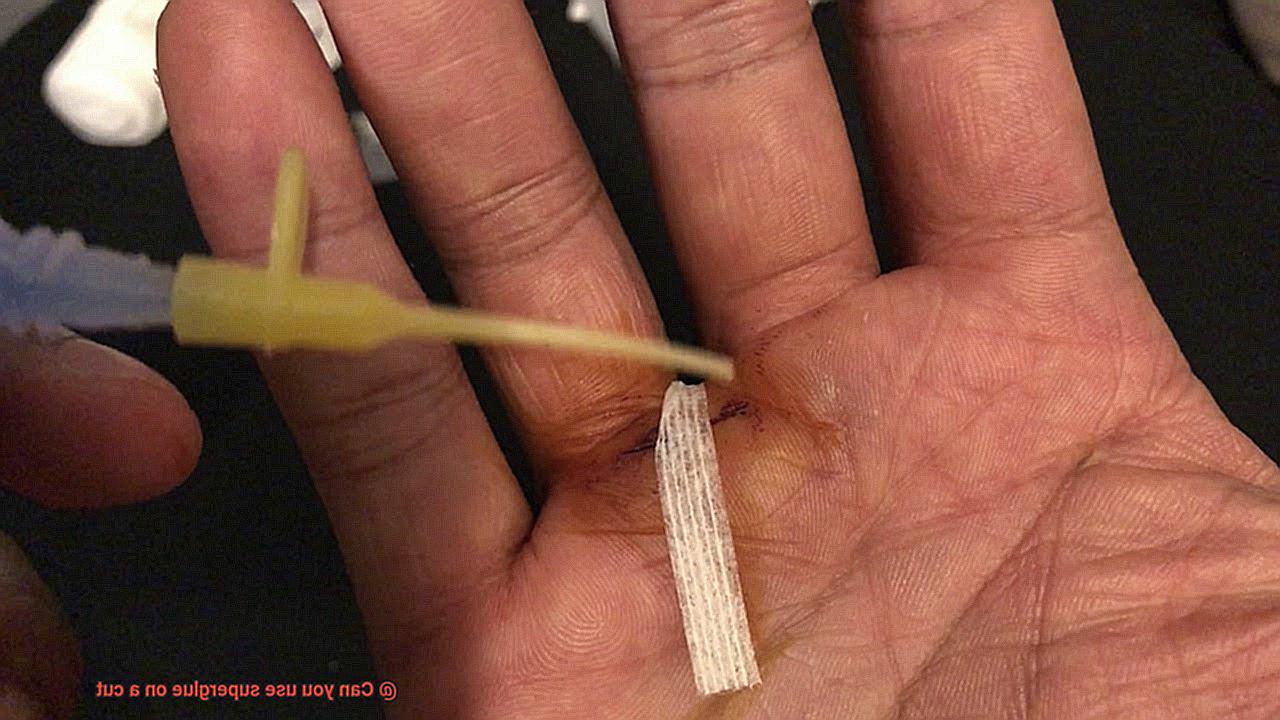
Remember, using superglue on cuts is not a substitute for proper medical attention when needed. It’s essential to seek professional care for serious or complicated wounds, as superglue only addresses the superficial aspect of the injury.
Cleaning the Wound Before Applying Superglue
Proper wound cleaning is essential for effectively treating cuts and wounds. Before reaching for that trusty tube of superglue, it’s important to follow a few simple steps to clean the wound thoroughly. Let’s dive into the world of wound cleaning before applying superglue.
First and foremost, cleanliness is key. Always wash your hands with soap and water before handling any wound. This helps minimize the risk of introducing additional bacteria or contaminants to the site. Clean hands are the foundation for a successful wound cleaning process.
Once your hands are squeaky clean, it’s time to gently rinse the wound with clean water. Harsh soaps or antiseptics should be avoided, as they can irritate the delicate tissues. Instead, use a gentle stream of water to remove any visible dirt or debris. Imagine the water flowing over the wound, carrying away all unwanted particles.
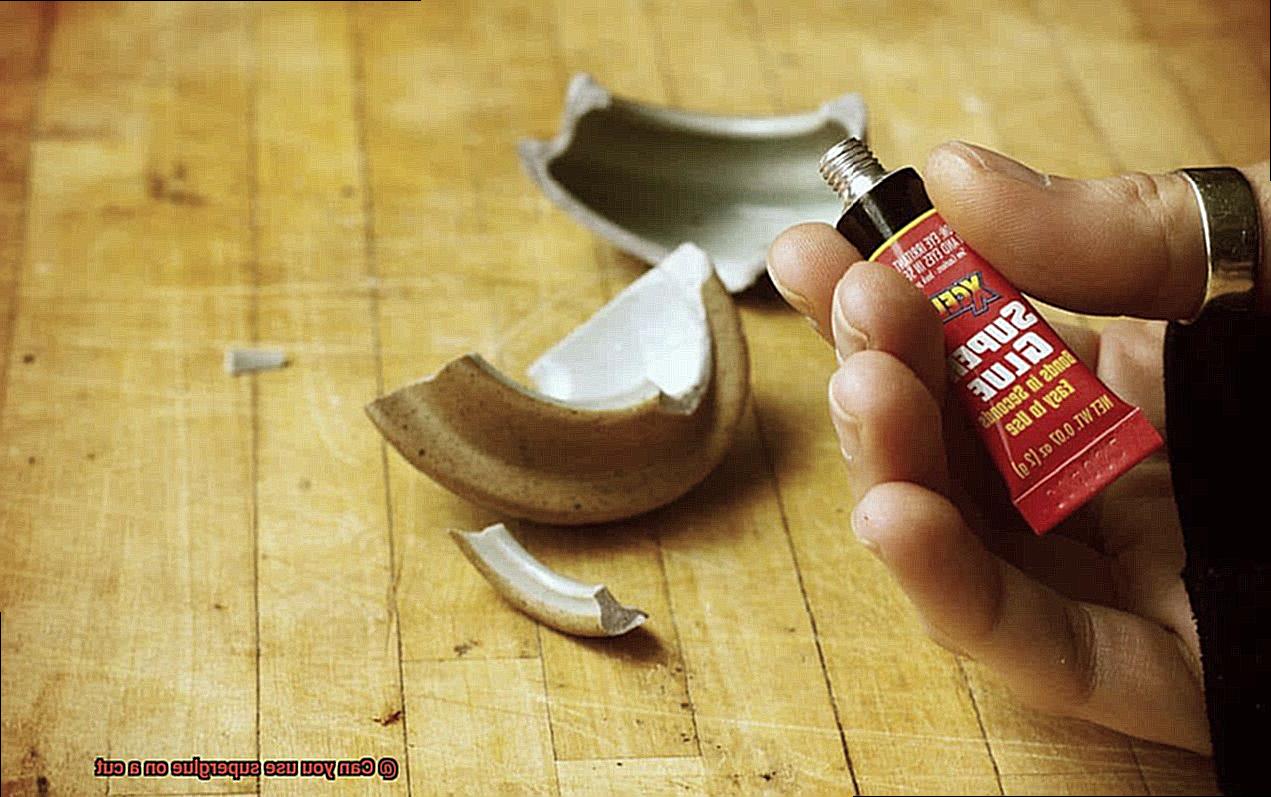
If you spot any stubborn dirt or debris, don’t panic. You can carefully remove it using sterile tweezers or a clean cloth. However, be cautious not to scrub the wound vigorously, as this can cause further damage. A gentle touch is crucial in this step. Imagine delicately plucking away any remnants of dirt, leaving behind a clean canvas.
Once you’ve rinsed away all the grime, it’s time to pat dry the wound. Use a clean towel or sterile gauze and gently blot the area until it’s completely dry. Moisture is not a friend to superglue, so make sure the wound is free from any lingering dampness. Imagine the towel absorbing any remaining moisture like a thirsty sponge.
If your wound is deep or has jagged edges, it may be necessary to trim any loose skin or tissue around it. This helps create smooth edges that will facilitate proper healing and enhance the effectiveness of superglue. Grab your sterile scissors or scalpel and trim away with precision. Imagine carefully sculpting the wound, shaping it into a neat and tidy form.
To further disinfect the wound and reduce the risk of infection, consider using an over-the-counter antiseptic spray or solution. Read and follow the instructions provided by the manufacturer to ensure safe and effective use. This additional step adds an extra layer of protection, keeping harmful bacteria at bay. Imagine a shield of antiseptic spray guarding the wound against any potential invaders.
It’s important to note that cleaning the wound alone may not be sufficient for some injuries. If you’re unsure about the severity or proper treatment of a cut, it’s always best to seek medical attention. A healthcare professional can properly assess and treat the wound before considering the use of superglue.
How to Apply Superglue on a Cut
Superglue, also known as cyanoacrylate adhesive, is a versatile adhesive often used for bonding objects together. But did you know that in certain situations, it can also be used to seal small cuts or wounds? While it may not be the ideal solution for every situation, using superglue on a cut can serve as a temporary measure until proper medical help is available. In this article, we will explore how to safely apply superglue on a cut, including important precautions and alternative methods for wound closure.

Clean the cut thoroughly:
Before applying superglue, it’s crucial to clean the cut thoroughly with mild soap and water. Gently remove any dirt or debris from the wound, as this can trap bacteria and increase the risk of infection. Cleaning the wound also helps ensure proper adhesion of the superglue. After cleaning, pat-dry the area with a clean towel or sterile gauze.
Ensure the wound is dry:
To ensure proper adhesion, it’s essential to make sure the cut is completely dry before applying superglue. Any moisture can interfere with the glue’s effectiveness and compromise its ability to create a strong bond. Gently blot the wound dry with a clean towel or allow it to air dry before proceeding.
Apply a thin layer of superglue:
With caution not to get the adhesive inside the wound itself, apply a small amount of superglue along the edges of the cut. The goal is to create a thin layer that seals and holds the wound together. Hold the edges of the wound together firmly and gently press them together for about one minute to allow the glue to bond and seal the wound effectively.
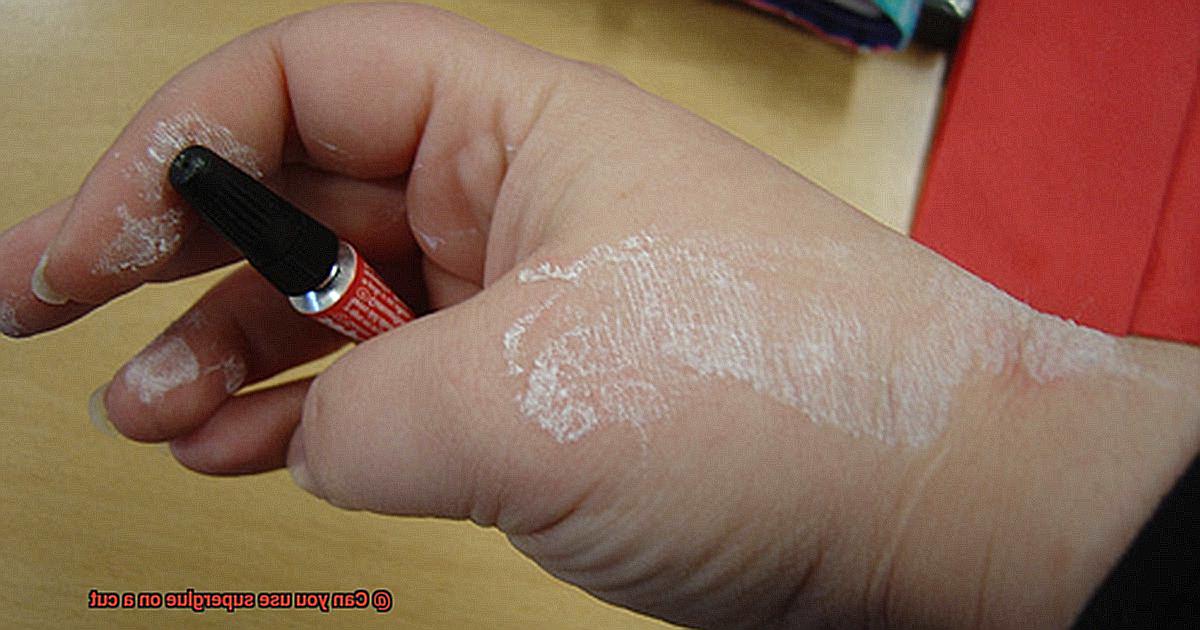
Monitor for any adverse reactions:
Superglue can cause a burning or stinging sensation upon application, which should subside shortly. However, if you experience severe pain or signs of an allergic reaction like swelling or difficulty breathing, remove the glue immediately and seek medical help. It’s important to note that superglue is not suitable for everyone and may cause adverse reactions in some individuals.
Keep the wound clean and dry:
After applying superglue, it’s crucial to keep the wound clean and dry to promote proper healing. Avoid picking at or disturbing the glued area, as this can interfere with the healing process and increase the risk of infection. Monitor the wound for any signs of infection, such as increased redness, swelling, or pus. If any signs of infection occur or if the wound does not heal within a few days, seek medical attention for further evaluation and treatment.
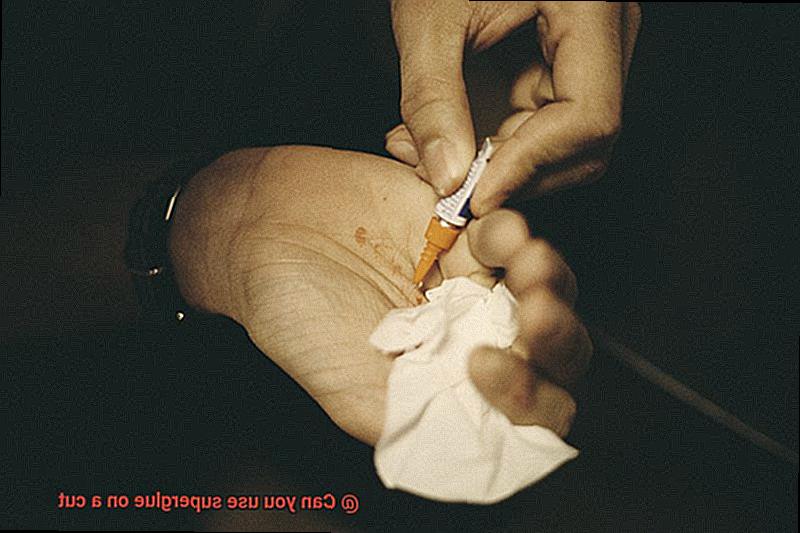
Alternatives to Using Superglue on Cuts
We’ve all encountered those pesky cuts and scrapes that seemingly appear out of thin air. While superglue has been a popular quick fix, it’s time to explore alternative options that can save the day.
So, grab your first aid kits and join me as we dive into the world of wound closure alternatives.
Embrace the Wings of Medical Adhesive Strips (Butterfly Stitches):
Imagine delicate butterfly wings gracefully bringing your wound edges together. This is the magic of medical adhesive strips, my friends. These ingenious strips are specially designed for wound closure. They work wonders for small to medium-sized cuts that aren’t too deep or wide. By promoting healing and keeping infections at bay, they provide a reliable alternative to superglue.
Unleash the Power of Liquid Bandages:
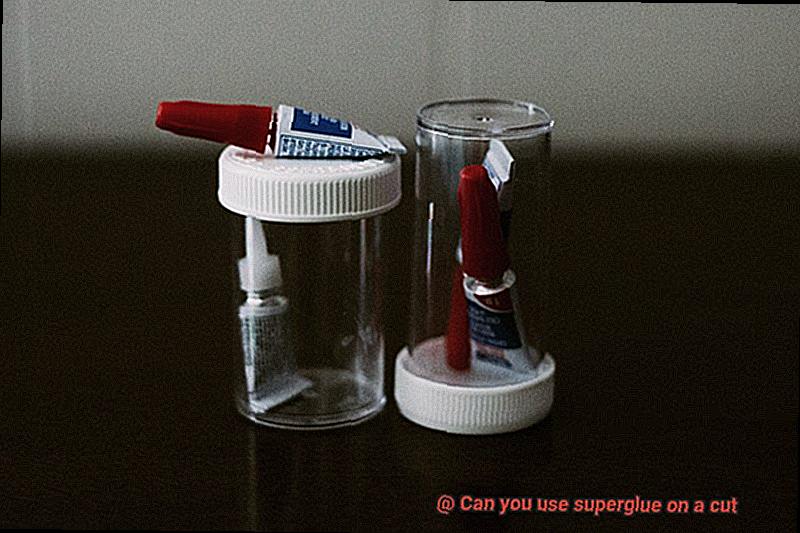
No, we’re not discussing Harry Potter’s incredible invisibility cloak here. Liquid bandages are akin to an invisible shield for your cuts. They form a protective layer over the wound, thwarting dirt and bacteria from wreaking havoc. The best part? They dry swiftly and flex seamlessly with your movements, making them perfect for those hard-to-reach areas like fingers or joints.
Apply Pressure and Maintain Cleanliness:
For minor cuts that aren’t profusely bleeding, applying pressure with a clean cloth or sterile gauze can work wonders. This simple technique helps halt the bleeding and encourages clotting. Once the bleeding has subsided, it is crucial to cleanse the wound with mild soap and water to prevent infection. Don’t forget to apply an over-the-counter antibiotic ointment and cover it with a sterile dressing for added protection.
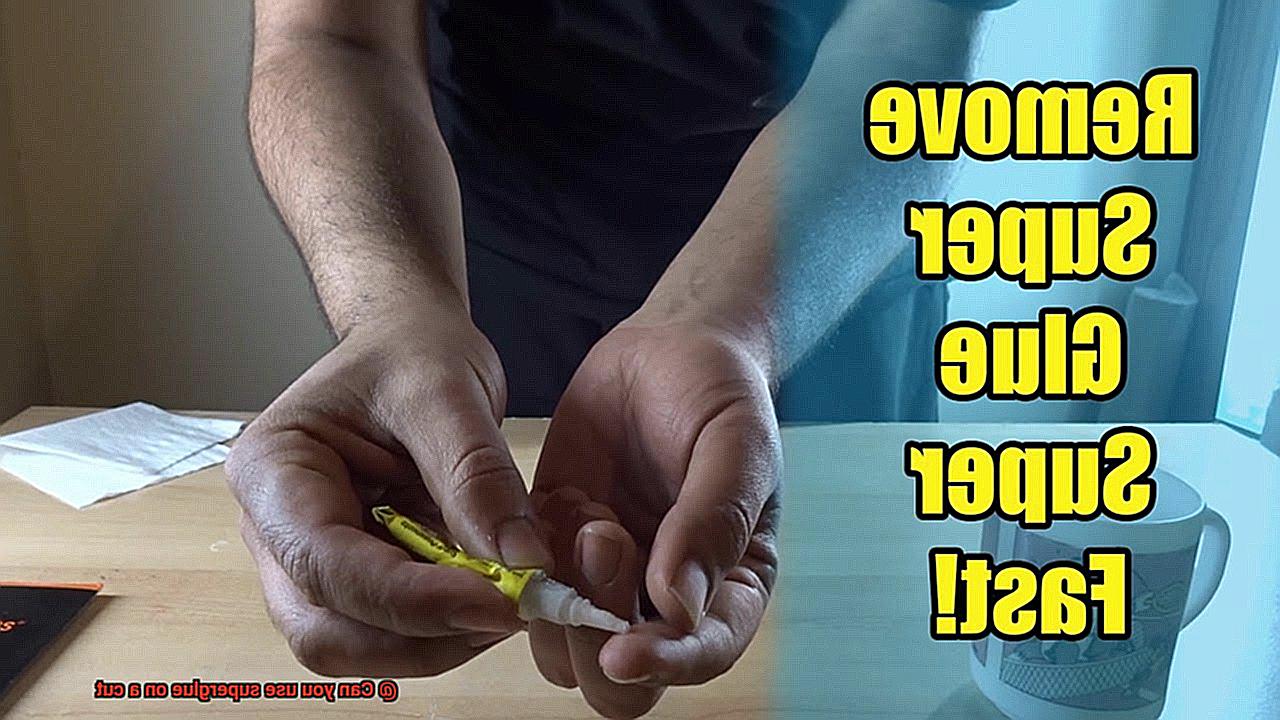
Seek Professional Assistance:

Ladies and gentlemen, when in doubt, seek professional help. If you’re grappling with a larger or deeper cut, or if it’s heavily contaminated, it’s time to wave the white flag and head to a healthcare professional. They have access to medical-grade adhesives and sutures that can properly close the wound and minimize scarring. Remember, there’s no shame in seeking expert advice.
Know When to Say No:
Dear friends, not all cuts are created equal. Certain types, such as puncture wounds or heavily contaminated ones, require proper cleaning and should never be treated with superglue or any of these alternatives. These wounds demand thorough care and may even necessitate medical intervention to prevent complications. Always err on the side of caution when it comes to your health.
When to Seek Medical Attention for Cuts
We all know that cuts are an inevitable part of life. Whether it’s a kitchen mishap or a clumsy encounter with a sharp object, we’ve all experienced the sting of a cut at some point. But how do you know when it’s time to put down the superglue and pick up the phone to call for medical help? Let’s dive into the world of wound care and find out.
First things first, let’s assess the severity of your cut. Is it just a minor scrape that can be easily cleaned and covered with a bandage? Or is it a deep, gaping wound that seems to have a mind of its own? Here are some signs that indicate you may need to seek medical attention:
- Profuse bleeding: If your wound continues to bleed even after applying pressure for several minutes, it’s time to seek professional help. Excessive bleeding could indicate damage to blood vessels or underlying tissues.
- Deep cuts exposing muscle or bone: If you can catch a glimpse of what lies beneath your skin, it’s definitely time to see a healthcare professional. Deep cuts require proper cleaning, evaluation, and potential suturing to prevent complications.
- Jagged edges and significant length: If your cut has uneven edges or measures longer than half an inch, it’s best to get it checked out. These types of wounds may require stitches to ensure proper healing.
- Dirty or rusty objects involved: Cuts caused by dirty or rusty objects increase the risk of infection. Seeking medical attention will help prevent potential complications like tetanus.
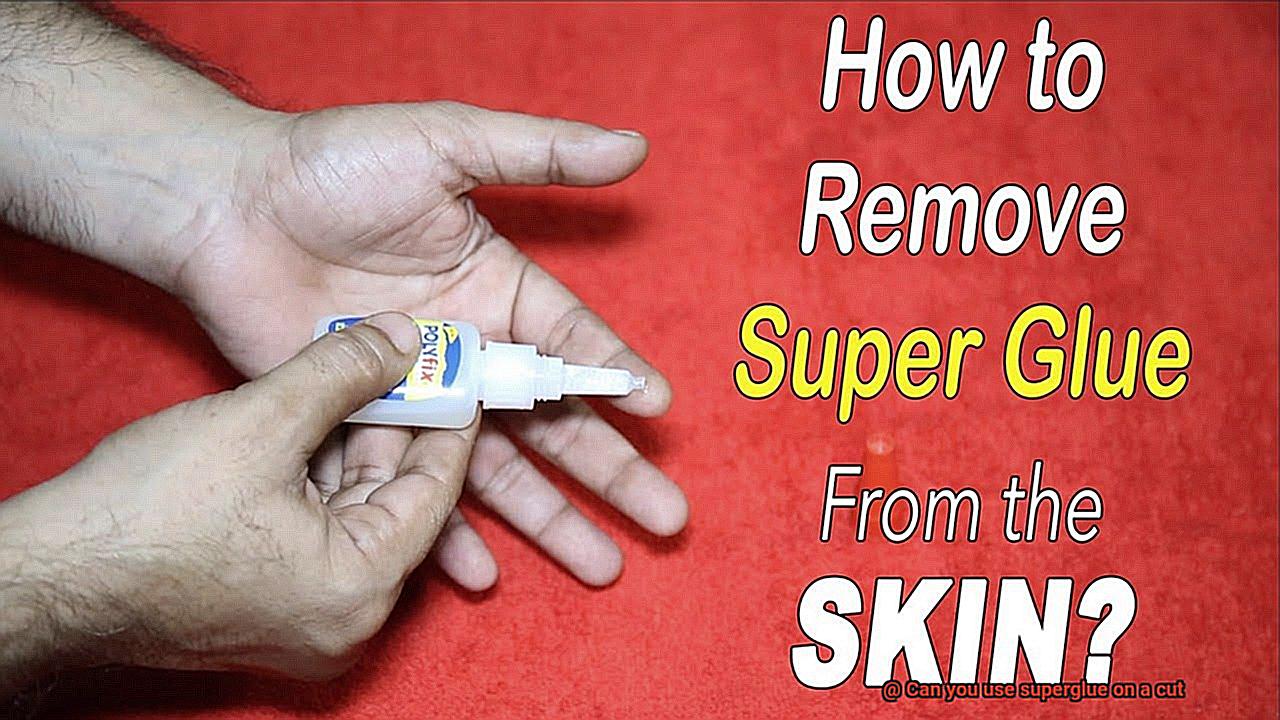
Numbness, tingling, or limited movement around the wound: These symptoms could indicate nerve damage and require immediate medical assessment.
Now that we’ve covered the signs that warrant seeking professional help, let’s talk about some specific scenarios. Cuts on the face, hands, or feet can be especially tricky due to their proximity to vital structures or increased movement. Seeking medical attention for these areas is crucial to ensure proper healing and minimize the risk of complications.
If you have an underlying health condition like diabetes or a compromised immune system, it’s important to consult a healthcare professional. They can provide specialized wound care and advise on the use of antibiotics or other medications if necessary.
Now, let’s address the elephant in the room – superglue. While it can indeed be used as a temporary measure to close minor cuts, it’s still highly recommended to seek medical attention. Why? Well, medical professionals have the expertise to properly clean the wound, evaluate its severity, and administer any necessary tetanus shots or antibiotics. Plus, they’ll ensure that you’re on the right track to a speedy recovery.
Potential Risks of Using Superglue on Cuts
Today, we will explore the potential risks associated with using superglue on cuts. While it may seem like a quick and easy solution, it is crucial to understand the hidden dangers that lie beneath the surface.
Skin Irritation and Allergic Reactions:
When superglue comes into contact with the skin, it can cause irritation, itching, redness, and even a rash. Those who have experienced allergic reactions to certain products know all too well the discomfort and unpredictability they bring.

Burns and Tissue Damage:
Applying superglue to an open wound can be hazardous. The adhesive properties of the glue react with bodily fluids, generating heat that can lead to burns and tissue damage. Ouch.
Increased Risk of Infection:
Superglue forms a hard seal over the wound, effectively trapping bacteria inside. This prevents proper cleaning and drainage, increasing the risk of infection and delaying the healing process. It’s like constructing an impenetrable fortress for those pesky bacteria.
Complications with Deep or Large Cuts:
Using superglue on deep or large cuts may not effectively seal the wound, leaving it vulnerable to further injury or bleeding. Talk about adding insult to injury.
Difficult and Painful Removal:
Removing superglue from a cut can be challenging and painful. Soaking the affected area in warm soapy water or using specific solvents may be necessary, but improper removal techniques can worsen the wound or cause discomfort.
Also Read: Can You Super Glue Electrical Wires?
Safety Precautions When Using Superglue On Cuts
Accidents happen, and when minor cuts occur, superglue is often used as a quick fix. However, it is paramount to prioritize safety by taking necessary precautions when using superglue on cuts. In this comprehensive guide, we will explore the vital safety measures that should be followed to ensure optimal results and minimize the risk of complications.
Assess the Severity of the Cut:
First and foremost, evaluate the severity of the cut. Superglue is only suitable for superficial cuts and abrasions. If the wound is deep or severe, seek immediate medical attention instead of relying on superglue.
Cleanse the Wound:
Before applying superglue, cleanse the cut meticulously with soap and water. This step eliminates any dirt or debris that may increase the risk of infection. Gently pat the area dry with a clean towel afterward.
Apply Super Glue Sparingly:
When applying superglue, use it sparingly. Apply a small amount directly onto the cut or abrasion, ensuring that it does not come into contact with surrounding healthy skin. Contact with healthy skin can cause irritation or damage.
Allow Ample Drying Time:
After applying superglue, allow it to dry completely before covering the wound with a sterile bandage or dressing. This step prevents contamination and provides protection against external elements.
Keep It Clean and Dry:
During the healing process, maintain cleanliness and keep the glued area dry to prevent infection. Avoid exposing the glued cut to excessive moisture or prolonged contact with water.
Monitor for Signs of Infection:
Even with proper precautions, there is still a risk of infection. Monitor the cut closely for any signs of infection, such as increased pain, redness, swelling, pus, or unusual discharge. If any of these symptoms occur, seek immediate medical attention.
Superglue is Not a Substitute for Medical Care:
Remember, superglue is only a temporary solution. It should never replace proper wound care and medical advice. If you are unsure about the severity of the cut or have any concerns, consult a healthcare professional.
F46t731hTmg” >




